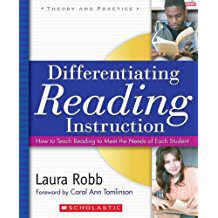The Reading Teacher – The Interactive Read Aloud
During my early years of teaching, I remember reading an article written in the mid-1930’s that proposed reading was “caught” much like one catches a cold. The article stated that not much could be done for children who didn’t catch reading during the primary years. I guess the appropriate conclusion was that most likely, they would remain weak and reluctant readers throughout their lives. I remember thinking, what an absurd theory! I also remember feeling intense anger over placing the children who didn’t “catch” reading in a box labeled “hopeless.”
It’s weird, but in the context of what we know about reading today, this theory can be rationalized. Those children who listen to thousands of books and hear and engage in meaningful talk before they enter kindergarten are primed to “catch” reading. That idea was not the point of the article, for the author offered no evidence, anecdotal or research-based, to support this static mindset.
Learning to Read as a Growth Mindset
When children interact with teachers and adults who believe it’s possible to create book joy, to enlarge vocabulary and background knowledge through conversations and by reading aloud several times a day, then gaps in literacy can close.
There are two kinds of read alouds students benefit from:
- Read aloud books you love and are passionate about sharing with students. Students sense the passion and hopefully work hard to replicate the reading experience for themselves.
- Read aloud to model how books affect your mind and feelings, how you interpret books and apply strategies like inferring and involve students in the process. When you present interactive read alouds, students have multiple opportunities to build and enlarge their mental models of what good readers do and eventually understand why they love reading.
Materials for Interactive Read Alouds
The interactive read aloud is the instructional piece of reading. It’s a mini-lesson where the teacher uses an anchor text to think-aloud to share how to apply a strategy such as inferring or literary elements and text structures. An anchor text is short and the same genre as the unit of study. You can use an excerpt from a longer text, a picture book, or a short text such as an article, folk tale, short, short story, or myth. Two elements guide my choice of an anchor text:
- it needs to be high quality literature; and
- short enough to complete in seven to ten lessons.
If a picture book is too long, but a book you feel strongly about using, summarize some parts to move the lessons forward. Then, offer the book for independent reading so students can connect with the entire text.
Guidelines for Presenting Interactive Read Alouds
By organizing your units of study around a genre and theme such as biography and obstacles or informational texts and changes, student first observe how you think about a text and then work with a partner to practice what you model before moving to their own texts. What follows are guidelines for presenting ten to fifteen minute interactive read alouds. The lessons become a reference point for review and for intervention and/or reteaching lessons.
- Model the strategies, literary elements, etc. that are in the plans for your unit of study.
- Name the strategy, literary element, or text structure, you’ll be modeling.
Today, I’m going to show you how I make an inference.
- Explain the strategy, how it helps readers, and what you will do to apply it.
An inference is meaning not stated in the text; it’s implied. Authors write texts expecting readers to infer. For this biography, Wilma Unlimited by Kathleen Krull, I will use details to find unstated meanings.
- Read a short part of the text out loud, and show how you apply the strategy.
I can infer Wilma’s family was poor. Her father worked several jobs to support Wilma and her nineteen brothers and sisters.
- Involve students on the next day. Have them pair-share and provide text evidence to support one inference.
- Collect students’ inferences on a T-Chart to show them how to organize their thinking in their notebooks. Write “Inference” on the left side and “Text Evidence” on the right side.
- Repeat this process until you’ve modeled and students have practiced the strategies for the unit.
Closing Thoughts
Reading aloud books you love and want to hear again and again nurtures your need for wonderful stories and shows your students the meaning of “I love to read.” In addition, make one of the read alouds interactive and instructional, so your students develop mental models about how to think and feel about books. Reading can’t be “caught.” It’s taught when students listen to and discuss stories before entering school. Once at school, they can observe how you and their peers interpret and respond to books. Then they self-select and read, read, read!
Check out Robb Communications to learn how Laura and Evan can help you meet your professional development goals!
Learn more ways to improve instructional reading in your school or division, Teaching Reading in Middle School, By Laura Robb

![]()









